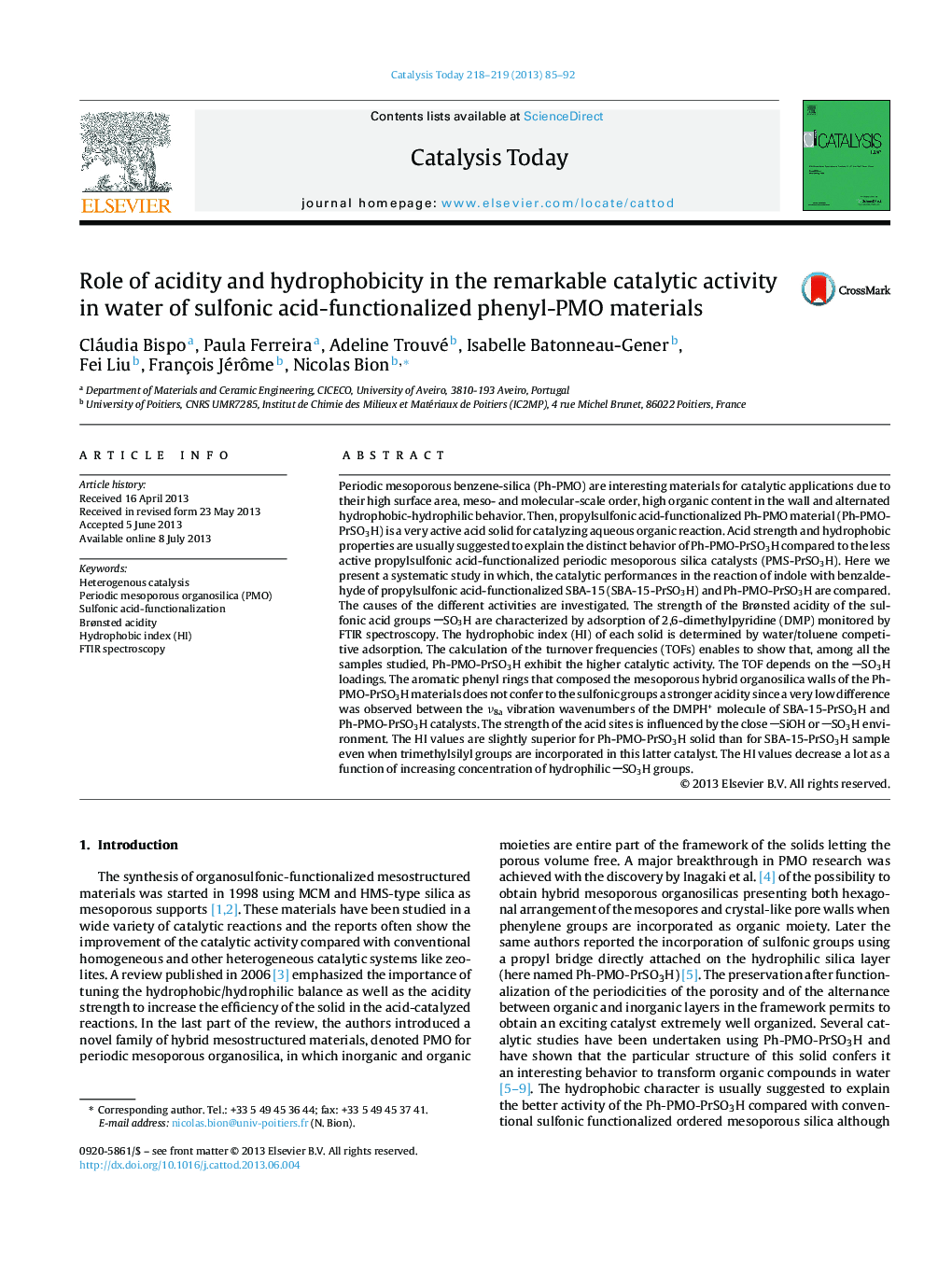| Article ID | Journal | Published Year | Pages | File Type |
|---|---|---|---|---|
| 54754 | Catalysis Today | 2013 | 8 Pages |
•Ph-PMO-SO3H is an active catalyst for aqueous organic reactions.•Hydrophobic index (HI) is governed by the SO3H loading.•At same SO3H loading, catalytic activity is not correlated to the HI.•Acid strength of SO3H groups depends on SiOH or SO3H interactions.
Periodic mesoporous benzene-silica (Ph-PMO) are interesting materials for catalytic applications due to their high surface area, meso- and molecular-scale order, high organic content in the wall and alternated hydrophobic-hydrophilic behavior. Then, propylsulfonic acid-functionalized Ph-PMO material (Ph-PMO-PrSO3H) is a very active acid solid for catalyzing aqueous organic reaction. Acid strength and hydrophobic properties are usually suggested to explain the distinct behavior of Ph-PMO-PrSO3H compared to the less active propylsulfonic acid-functionalized periodic mesoporous silica catalysts (PMS-PrSO3H). Here we present a systematic study in which, the catalytic performances in the reaction of indole with benzaldehyde of propylsulfonic acid-functionalized SBA-15 (SBA-15-PrSO3H) and Ph-PMO-PrSO3H are compared. The causes of the different activities are investigated. The strength of the Brønsted acidity of the sulfonic acid groups SO3H are characterized by adsorption of 2,6-dimethylpyridine (DMP) monitored by FTIR spectroscopy. The hydrophobic index (HI) of each solid is determined by water/toluene competitive adsorption. The calculation of the turnover frequencies (TOFs) enables to show that, among all the samples studied, Ph-PMO-PrSO3H exhibit the higher catalytic activity. The TOF depends on the SO3H loadings. The aromatic phenyl rings that composed the mesoporous hybrid organosilica walls of the Ph-PMO-PrSO3H materials does not confer to the sulfonic groups a stronger acidity since a very low difference was observed between the ν8a vibration wavenumbers of the DMPH+ molecule of SBA-15-PrSO3H and Ph-PMO-PrSO3H catalysts. The strength of the acid sites is influenced by the close SiOH or SO3H environment. The HI values are slightly superior for Ph-PMO-PrSO3H solid than for SBA-15-PrSO3H sample even when trimethylsilyl groups are incorporated in this latter catalyst. The HI values decrease a lot as a function of increasing concentration of hydrophilic SO3H groups.
Graphical abstractCombining catalytic tests with characterizations using FTIR spectroscopy and water/toluene competitive adsorption, we describe the role of hydrophobicity, acid strength and stability in the remarkable activity of sulfonic acid-functionalized periodic mesoporous benzene-silica material in the acid-catalyzed aqueous organic reactions.Figure optionsDownload full-size imageDownload high-quality image (189 K)Download as PowerPoint slide
